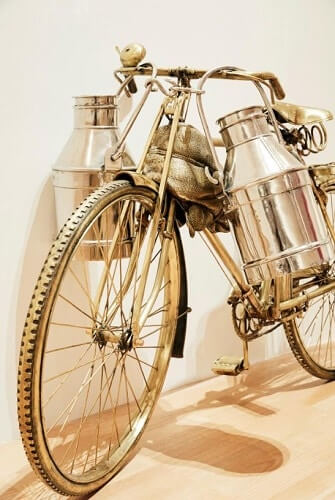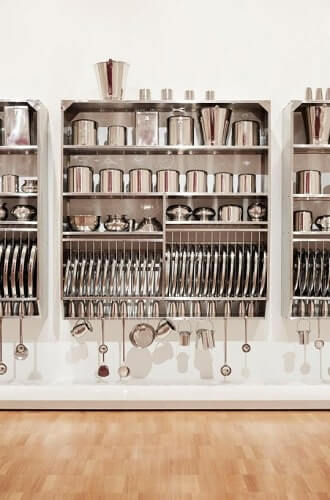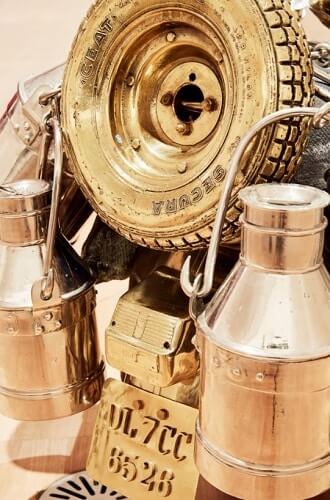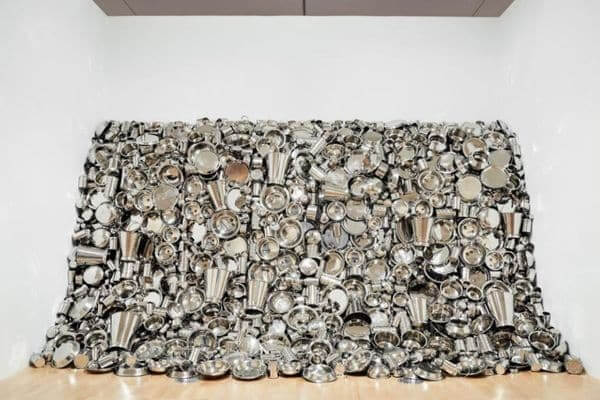In his Melbourne exhibition, Subodh Gupta: Everyday Divine, India’s leading contemporary artist establishes the essential Hindu tenet that the divine can be found in everyday experiences
The gleam of stainless steel. The flash of bronze. The dull sparkle of aluminium. A hush, plush space, with gleaming floors and elegant walls. Yet what Subodh Gupta has immortalised so strikingly in the National Gallery of Victoria’s exhibition ‘Subodh Gupta: Everyday Divine’ is not familiar twists of abstract shape or perplexing, nameless forms, but recognisable objects found in households, streets, trains, and villages – literally, the stuff of everyday life in India. ‘Everyday Divine’ is a solo exhibit of the iconic artist’s work in collaboration with New York collector Larry Warsh.

As Senior Curator Simon Maidment explains, Gupta draws on French artist Marcel Duchamp’s concept of the readymade, “whereby an everyday object becomes art through the act of placing it in an art gallery context”. The most stunning example of this transformation is the first piece that greets the visitor upon walking into the exhibition, ‘Hungry God’.
A gleaming, yet pock-marked cascade of stainless steel buckets, pans, bowls and pots, it seeks to make the modern-day Indian kitchen a “secular temple”, and its working implements, idols, the whole being an offering to a “hungry God”.

Gupta has reflected on his Hindu upbringing in the province of Bihar, wherein everyday objects such as kitchen utensils become sacred when offered to the divine. At the same time, stainless steel is also firmly rooted in the currents of the modern world, being, as Maidment argues, “synonymous with the modernisation and economic development of India in the twentieth century… an object of desire for people in an increasingly modern and more time-pressured society”.
Another surprising example of this fluidity of the everyday is ‘Gober Ganesha’, a basket of bronze-cast cow patties, their grooves catching light and turning to gold, sitting proudly behind a glass case. Simply by placing them behind the case, and casting them in bronze, a material associated with ritual objects and the faces of the gods, Gupta has elevated an essential, earthy element of rural life. However, like ‘Hungry God’, the everyday here already has the sacred woven into it, a duality that is still so present in modern India – cow dung is symbolic of the Hindu reverence of the cow, but is at the same time a medicine and a fuel.

Gupta also reflects on travel. In ‘Fly With Me’, rolled and tied luggage, bedding and boxes sit on steel shelves, made of aluminium but instantly reminiscent of an Indian train carriage or station cloakroom. They are a reminder not only of travel in contemporary India, but, as Maidment points out, “the formation of independent India and the seismic lived experience of partition in 1947”, a mass displacement and migration of almost 15 million people. Gupta’s work “balances the everyday with something larger: a significant event that affected many lives, a hidden force or the dream of something new and elsewhere”.
‘Everyday Divine’ is indeed a meditation on both the great and the small of ordinary Indian life. It is also an experiment in the power of naming and exhibiting, with the viewer’s reading, gazing, and moving from piece to piece an essential part of its success.
‘Subodh Gupta: Everyday Divine’ is on at the NGV until 16 Oct, 2016
Click here for details





